Overview
This article highlights ten foods that can be particularly beneficial for individuals navigating the journey of Type 2 diabetes. It emphasizes the importance of incorporating non-starchy vegetables, whole grains, lean proteins, healthy fats, and fruits like berries and citrus into your diet. Each food is thoughtfully presented for its role in managing blood sugar levels and promoting overall health. We provide practical suggestions to help you integrate these foods into a diabetes-friendly diet, empowering you to make informed dietary choices.
It's understandable to feel overwhelmed by dietary changes. Remember, you’re not alone in this journey. By focusing on these nourishing options, you can take positive steps toward better health. We encourage you to explore these foods and consider how they can fit into your daily meals. Sharing your experiences with others can also foster a supportive community, reminding you that there are people who understand your challenges and triumphs.
As you read through this article, we hope you find encouragement and clarity. We're here to support you every step of the way, guiding you toward a healthier lifestyle that feels achievable and rewarding.
Introduction
Navigating the complexities of Type 2 diabetes can often feel overwhelming. It’s understandable to feel uncertain, especially when making dietary choices that support your health and well-being. With so much information available, it becomes crucial to identify which foods can truly make a difference in managing blood sugar levels and enhancing overall health.
This article explores ten essential foods that not only cater to the dietary needs of individuals with Type 2 diabetes but also offer a wealth of nutrients that promote vitality and balance.
How can simple dietary adjustments lead to significant improvements in health outcomes for those managing this condition? You're not alone in this journey, and together, we can explore the possibilities for a healthier future.
T2DSolutions: Comprehensive Resource for Type 2 Diabetes Management
T2DSolutions stands as a compassionate resource for individuals navigating the journey of Type 2 Diabetes. As a newly launched platform, it provides a wealth of information, including:
- Dietary plans
- Exercise routines
- The latest research on diabetes management
By focusing on clear, actionable advice, T2DSolutions empowers you to make informed decisions about your health. You're not alone in this journey; with a strong commitment to community support and education, T2DSolutions ensures that both newly diagnosed patients and those with years of experience can find valuable resources tailored to their unique needs. We are here to support you every step of the way.
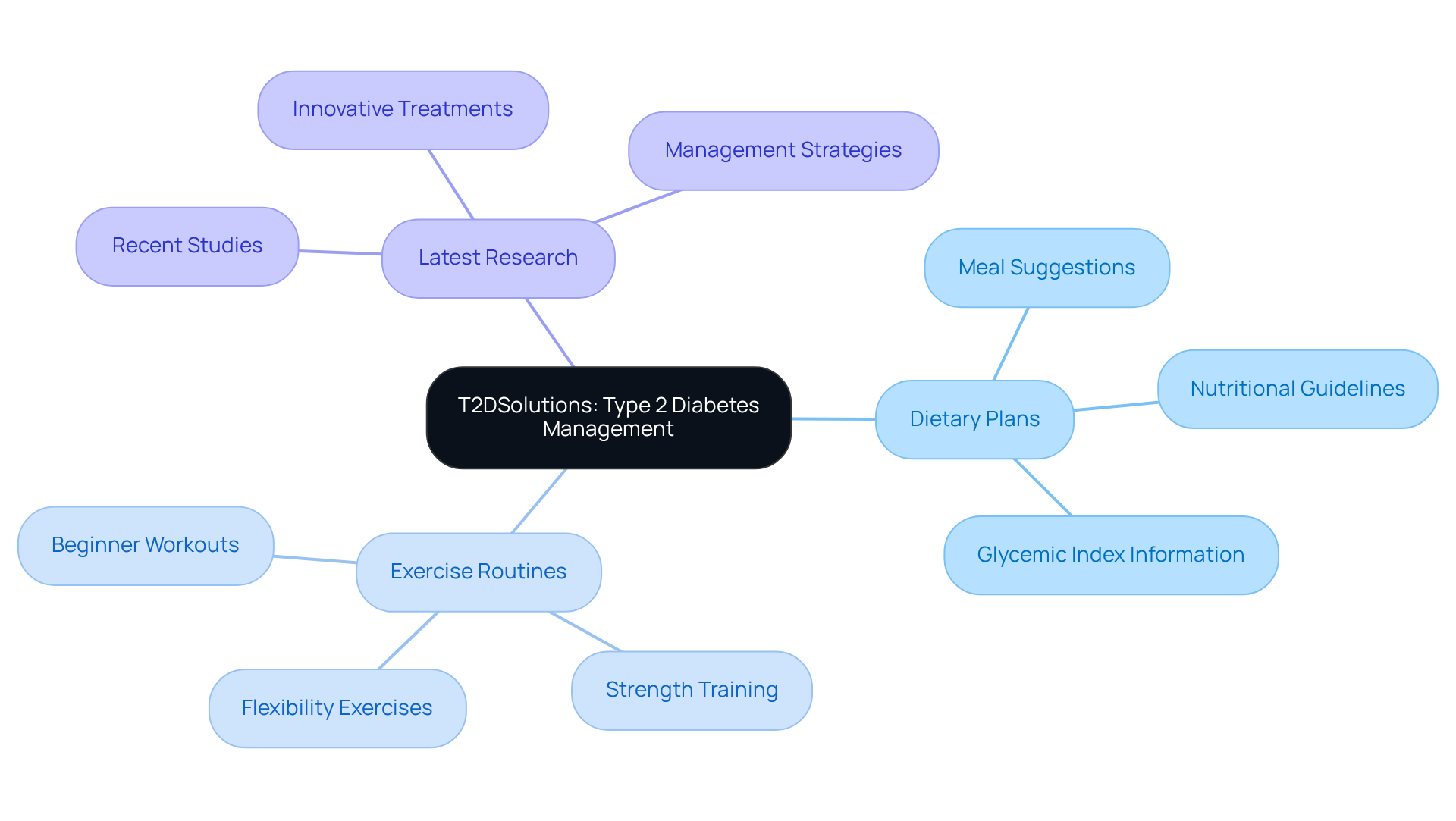
Non-Starchy Vegetables: Essential for Blood Sugar Control
Non-starchy vegetables, such as spinach, broccoli, and bell peppers, are not only low in carbohydrates but also high in fiber. This combination makes them a wonderful choice for managing glucose levels. At T2DSolutions, we truly understand the importance of incorporating these vegetables into your diet. They are vital for your health, providing essential vitamins and minerals while keeping calorie intake low.
To help you get started, consider adding a vibrant salad with mixed greens, cherry tomatoes, and sliced bell peppers to your meals. Alternatively, steaming broccoli as a side dish can be both delicious and nutritious. Including a variety of these vegetables in your meals is one of the essential foods to eat if you have type 2 diabetes, as it can help maintain stable glucose levels and enhance your overall well-being. Remember, you're not alone in this journey; we are here to support you every step of the way.
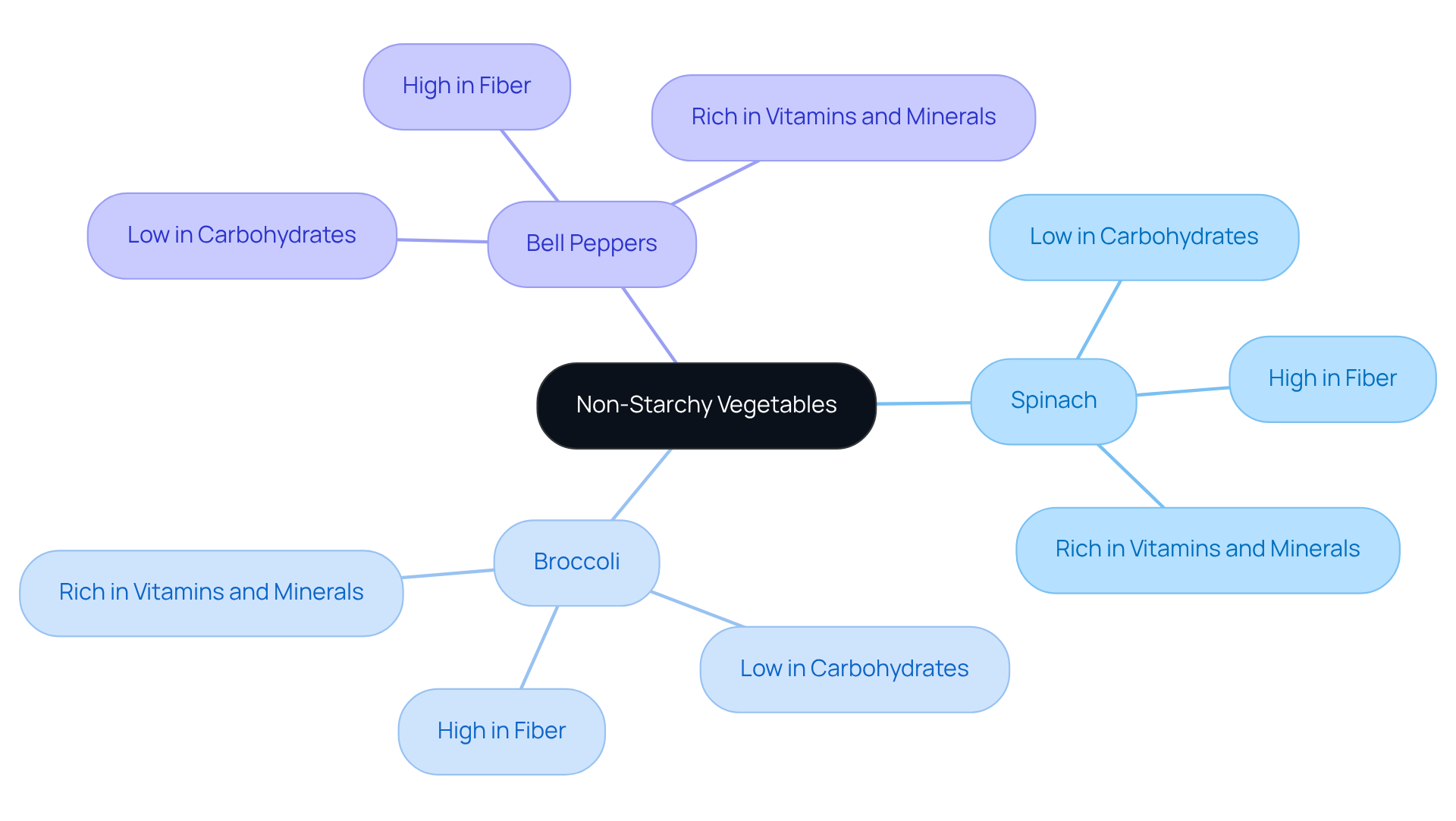
Whole Grains: Nutrient-Rich Choices for Stable Blood Sugar
Whole grains, like quinoa, brown rice, and whole wheat bread, are not just nutritious; they are a wonderful choice for your health. These grains are rich in fiber and essential nutrients, which can be incredibly beneficial for your body. They also have a lower glycemic index compared to refined grains, meaning they lead to a slower rise in blood sugar levels. This can be especially important for maintaining steady energy throughout the day.
Incorporating whole grains into your meals is among the recommended foods to eat if you have type 2 diabetes, as it can enhance insulin sensitivity and help your body manage sugar levels more effectively. It’s understandable to feel overwhelmed with dietary changes, but incorporating foods to eat if you have type 2 diabetes into your diet can be a simple yet powerful step. You're not alone in this journey; many people are discovering the benefits of whole grains and feeling more energized.
Consider trying new recipes that feature these grains, or perhaps start with a simple switch, like choosing brown rice instead of white. Every small change counts, and we are here to support you every step of the way. Remember, nourishing your body with whole grains can lead to a healthier, more vibrant life.
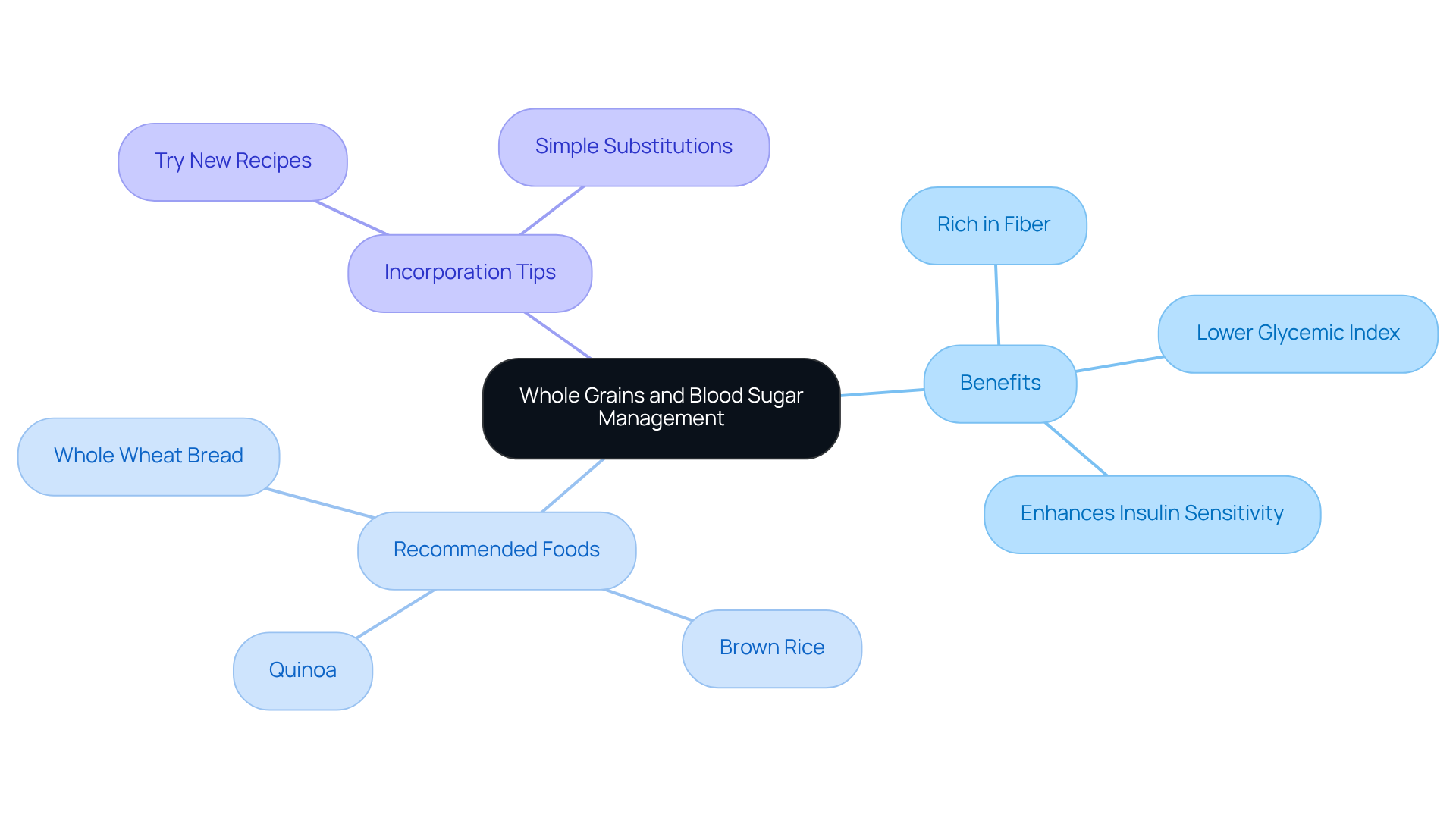
Lean Proteins: Support Muscle Health and Satiety
Lean proteins, such as chicken, turkey, fish, and plant-based options like tofu and legumes, play a crucial role in supporting muscle function and promoting a feeling of fullness. These proteins help stabilize glucose levels by slowing digestion, which can be especially beneficial for those managing diabetes. Including a source of lean protein in each meal not only supports weight management but also contributes to overall wellness. For those who are newly diagnosed, incorporating these proteins can be a meaningful step towards better blood sugar regulation and improved well-being.
It's understandable to feel overwhelmed by dietary changes, but remember, you're not alone in this journey. Lean proteins are a vital component of a diabetes-friendly diet, which includes foods to eat if you have type 2 diabetes, allowing you to take control of your health with each meal. We are here to support you every step of the way as you navigate this path toward a healthier lifestyle.
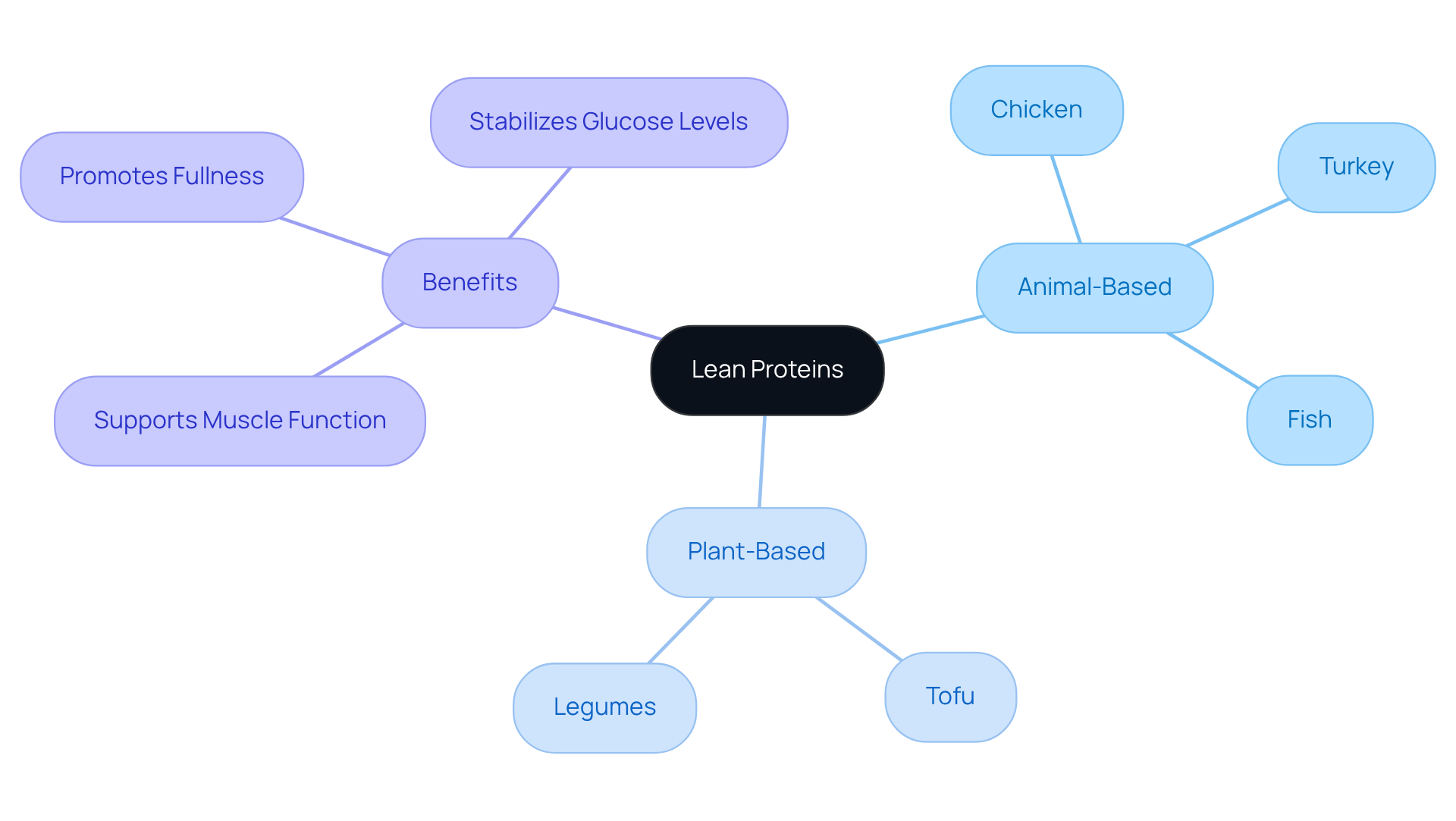
Healthy Fats: Promote Heart Health and Nutrient Absorption
Nutritious fats, such as those found in avocados, nuts, seeds, and olive oil, are essential for your cardiovascular health. They can help improve cholesterol levels, which is so important for your well-being. Additionally, these healthy fats play a vital role in the absorption of vitamins A, D, E, and K. By incorporating moderate amounts of these nutritious fats into your meals, you can not only enhance your overall health but also add delightful flavors to your dishes.
It's understandable to feel overwhelmed when navigating dietary changes. Remember, you are not alone in this journey. Embracing these healthy fats can be a small yet impactful step toward better health. We are here to support you every step of the way as you explore delicious and nutritious options that benefit your body and mind.
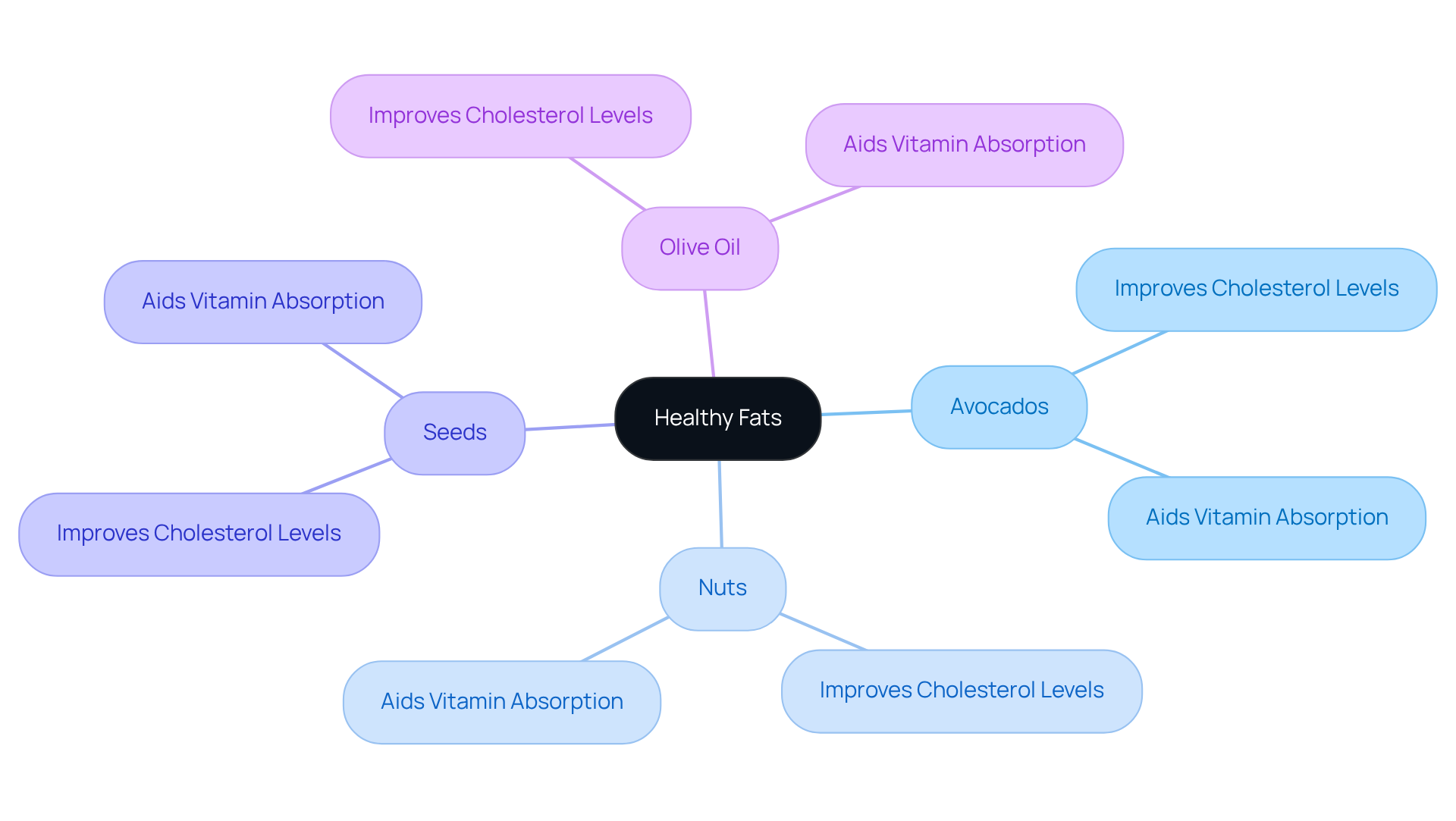
Berries: Low-Sugar Fruits Packed with Antioxidants
Berries, such as strawberries, blueberries, and raspberries, are not only delicious but also a wonderful choice for your health. They are low in carbohydrates and high in antioxidants, making them a fantastic option for those looking to nourish their bodies. These little fruits provide essential vitamins and minerals, and they play a significant role in combating oxidative stress.
Including berries in your diet can satisfy your sweet cravings while promoting your overall well-being. It's understandable to seek out enjoyable foods to eat if you have type 2 diabetes that are also beneficial. Incorporating berries into your diet can be one of the foods to eat if you have type 2 diabetes, helping you support your blood sugar regulation and feel good about what you eat. Remember, you're not alone in this journey—small changes can lead to significant improvements in your health.
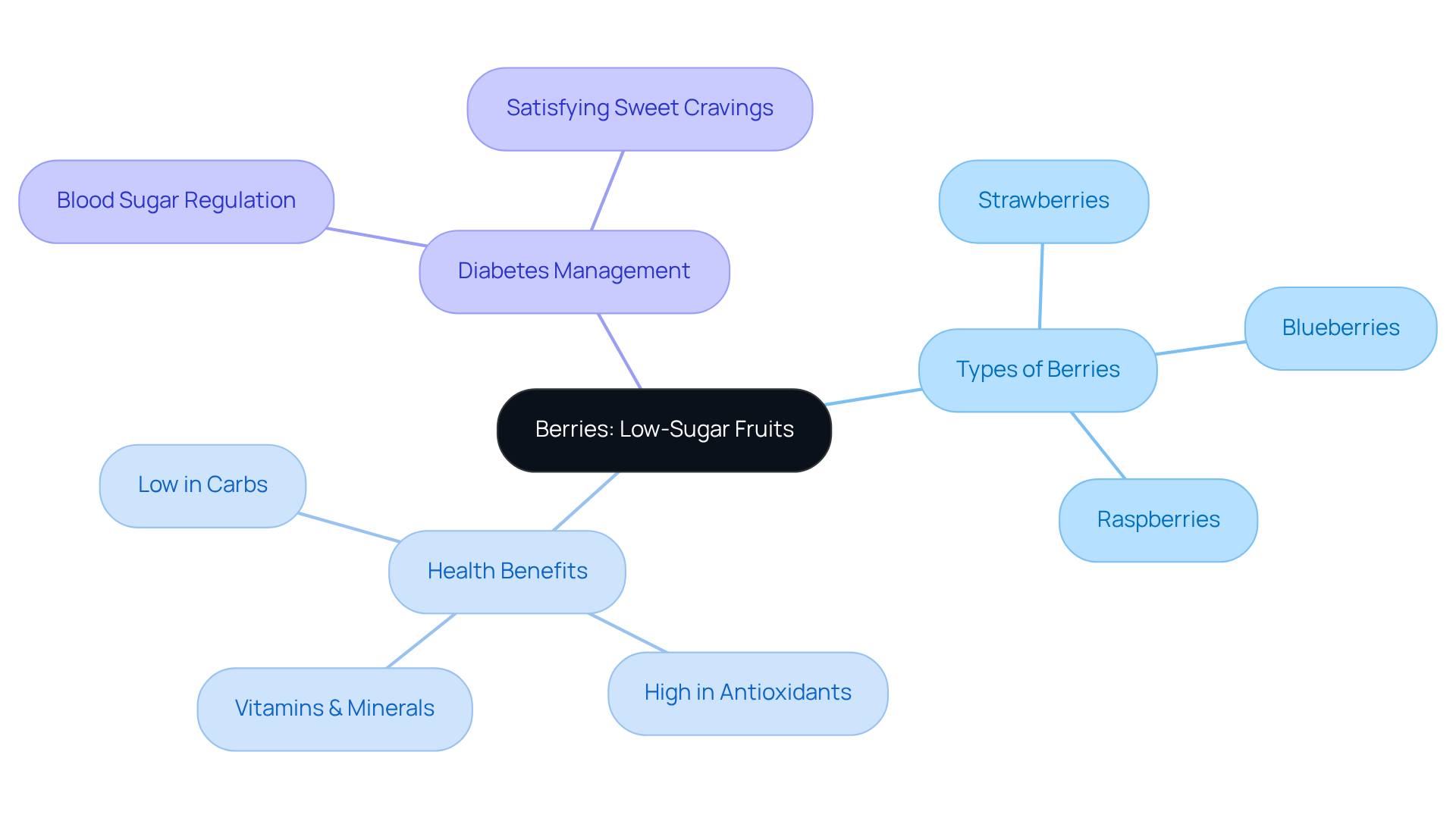
Fatty Fish: Omega-3 Rich Choices for Heart Health
Fatty fish, such as salmon, mackerel, and sardines, are rich in omega-3 fatty acids. These essential nutrients can help reduce inflammation and lower the risk of heart disease, which is especially important when choosing foods to eat if you have type 2 diabetes. By including fatty fish in your meals at least twice a week, you can support your cardiovascular health and overall well-being.
It's understandable to feel overwhelmed with dietary changes, but remember, you are not alone in this journey. Embracing these nutritious options, which include foods to eat if you have type 2 diabetes, can be a positive step toward managing your health. If you're looking for practical ways to incorporate fatty fish into your diet, consider simple recipes or meal plans that make it easier. We are here to support you every step of the way.
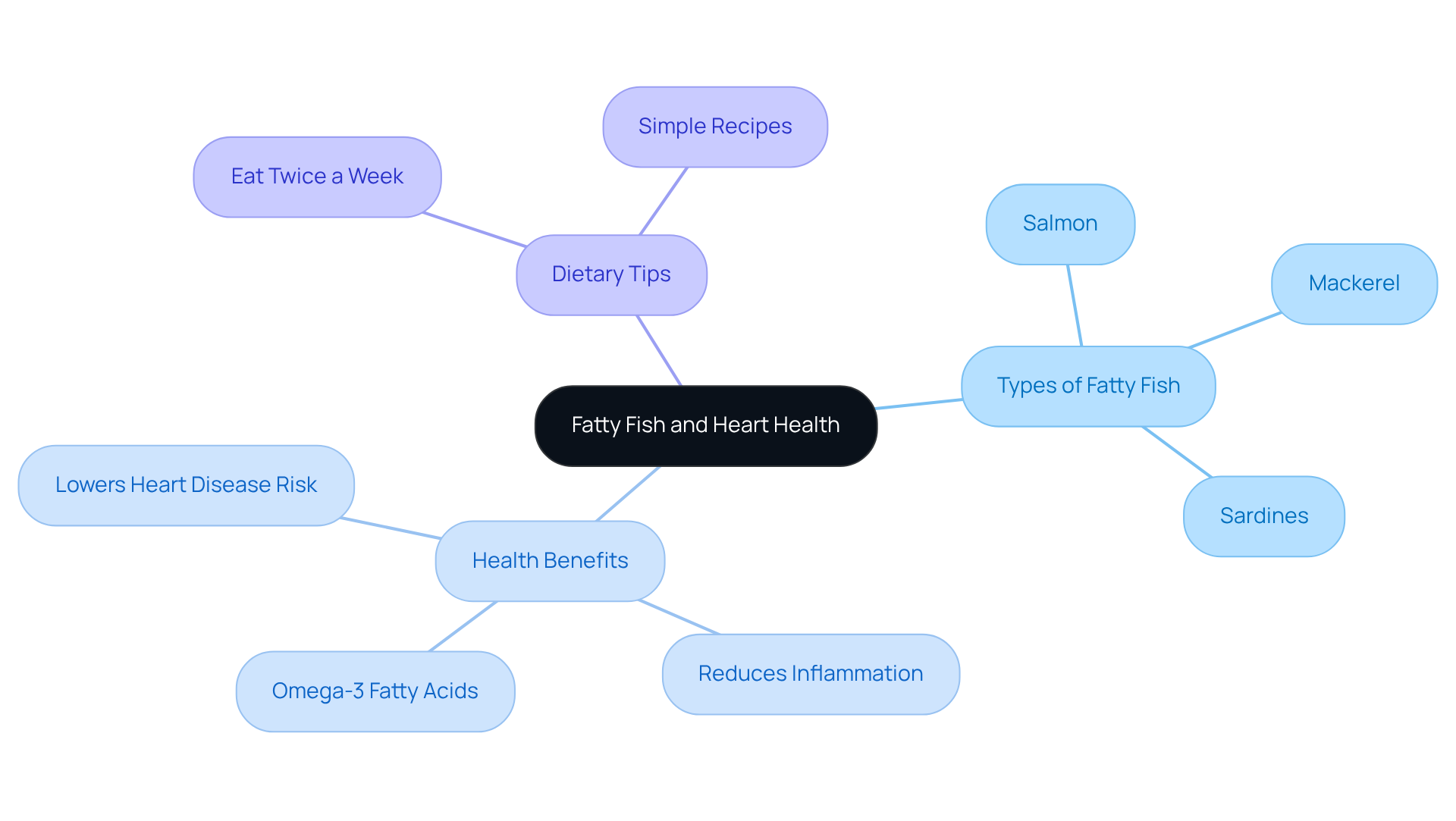
Legumes: Fiber and Protein Powerhouses for Blood Sugar Control
Legumes, such as beans, lentils, and chickpeas, are not just nutritious; they are also rich in fiber and protein, which can help you manage your blood sugar levels and feel fuller for longer. With a low glycemic index, these foods to eat if you have type 2 diabetes can easily fit into various dishes, making them a versatile choice for anyone managing diabetes.
You're not alone in this journey, and T2DSolutions is here to support you. We provide a variety of resources, including delicious recipes and educational materials, to empower you in making informed dietary choices that include foods to eat if you have type 2 diabetes.
Remember, every small step counts, and we are here to help you every step of the way.
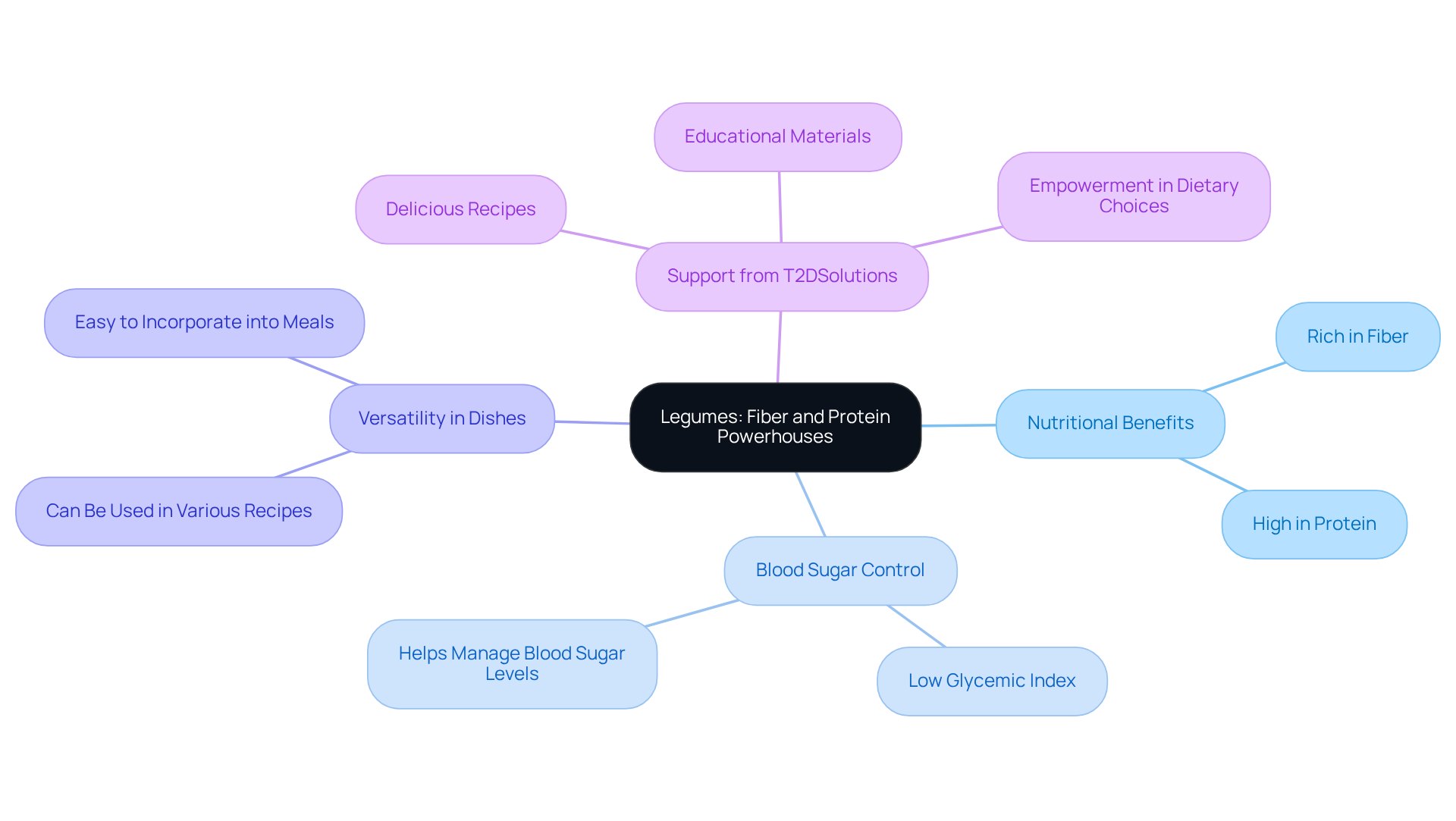
Greek Yogurt: Probiotic-Rich Snack for Digestive Health
Greek yogurt is not just a delicious treat; it’s a wonderful source of protein and probiotics, both essential for maintaining digestive health and enhancing gut microbiota. Choosing plain, unsweetened Greek yogurt offers a satisfying snack that can also aid in managing glucose levels. It’s understandable to feel overwhelmed by dietary choices, but research shows that incorporating yogurt with live cultures into your daily routine can significantly lower the risk of developing diabetes. In fact, just 100 grams a day may reduce your risk by an estimated 7%.
To make your yogurt experience even better, consider adding fresh berries or a handful of nuts. These additions not only enhance the yogurt’s natural tanginess but also provide extra fiber and antioxidants. Dietitians often highlight the importance of probiotics in regulating glucose levels, noting their potential to improve insulin sensitivity and overall metabolic health.
Many individuals have shared their success stories about including Greek yogurt in their diabetes management plans. They report feeling better, with improved digestive health and better glucose control. This makes Greek yogurt not only a tasty choice but also one of the beneficial foods to eat if you have type 2 diabetes for those looking to enhance their dietary approach.
If you’re seeking more resources and support to incorporate healthy foods like Greek yogurt into your diet, know that you’re not alone in this journey. Visit T2DSolutions, where you can find helpful recipes, community forums, and expert advice tailored for newly diagnosed patients. We are here to support you every step of the way.
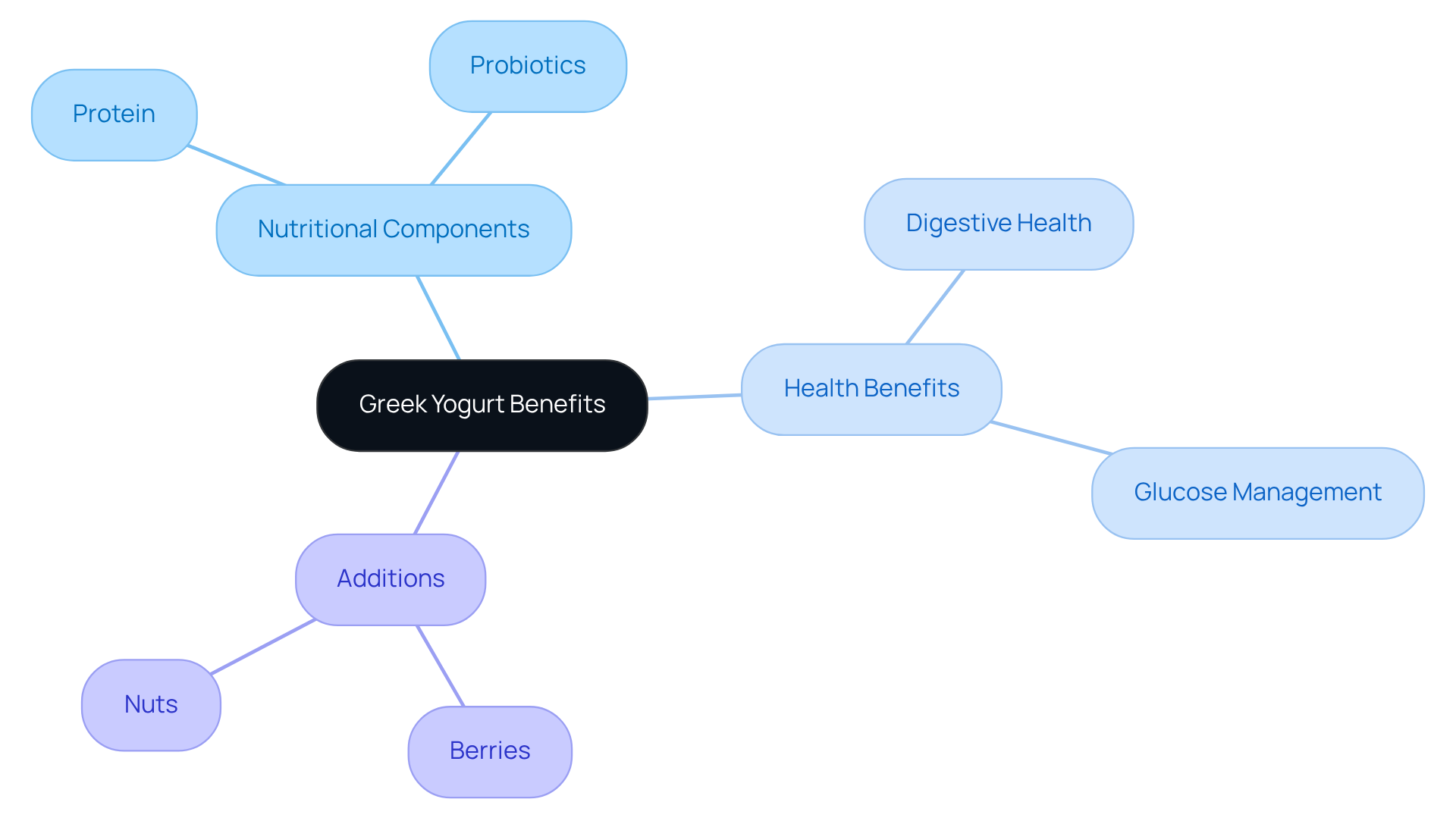
Citrus Fruits: Refreshing and Low-Calorie Sweet Options
Citrus fruits—like oranges, grapefruits, and lemons—are excellent foods to eat if you have type 2 diabetes, as they are low in calories and rich in vitamin C, offering a refreshing and sweet option for those managing diabetes. Additionally, the fiber in citrus fruits can help regulate blood sugar levels, making them among the best foods to eat if you have type 2 diabetes for a healthy snack or dessert.
At T2DSolutions, we understand that navigating dietary choices can be challenging, especially after a new diagnosis. We aim to provide resources and educational content that support you in making informed decisions. Incorporating nutritious options like citrus fruits into your meal plans can be a simple yet effective step in identifying foods to eat if you have type 2 diabetes for better health. Remember, you're not alone in this journey; we're here to support you every step of the way.
Conclusion
Incorporating the right foods into a diet for managing Type 2 Diabetes is essential for maintaining overall health and well-being. This article highlights ten key food categories that can significantly contribute to better blood sugar control and improved health outcomes. By focusing on:
- Non-starchy vegetables
- Whole grains
- Lean proteins
- Healthy fats
- Berries
- Fatty fish
- Legumes
- Greek yogurt
- Citrus fruits
you can make informed dietary choices that support your journey with diabetes.
The insights shared throughout this piece reinforce the importance of a balanced diet rich in nutrients. Non-starchy vegetables provide essential vitamins while keeping calorie intake low. Whole grains enhance insulin sensitivity, and lean proteins contribute to muscle health and satiety. Healthy fats promote heart health, while antioxidant-packed berries offer a delicious way to satisfy sweet cravings. Meanwhile, fatty fish and legumes support cardiovascular health and blood sugar stability, and Greek yogurt serves as a probiotic-rich snack that aids digestion. Citrus fruits round out this list with their refreshing taste and blood sugar-regulating properties.
Ultimately, taking small, manageable steps toward incorporating these foods into your daily meals can lead to significant health improvements. Embracing a diabetes-friendly diet is not just about restriction; it's about discovering a variety of delicious and nutritious options that enhance your well-being. With support from resources like T2DSolutions, you can navigate your dietary choices confidently, knowing you are not alone on this journey. Prioritizing these foods can pave the way for a healthier, more vibrant life while effectively managing Type 2 Diabetes.
Frequently Asked Questions
What is T2DSolutions?
T2DSolutions is a newly launched platform that serves as a comprehensive resource for individuals managing Type 2 Diabetes, providing information on dietary plans, exercise routines, and the latest research on diabetes management.
How does T2DSolutions support individuals with Type 2 Diabetes?
T2DSolutions offers clear, actionable advice and emphasizes community support and education, ensuring that both newly diagnosed patients and those with experience can find valuable resources tailored to their unique needs.
Why are non-starchy vegetables important for managing Type 2 Diabetes?
Non-starchy vegetables, such as spinach, broccoli, and bell peppers, are low in carbohydrates and high in fiber, making them beneficial for managing glucose levels and providing essential vitamins and minerals while keeping calorie intake low.
Can you provide examples of how to incorporate non-starchy vegetables into meals?
You can add a vibrant salad with mixed greens, cherry tomatoes, and sliced bell peppers to your meals, or steam broccoli as a nutritious side dish.
What are whole grains and why are they beneficial for people with Type 2 Diabetes?
Whole grains, like quinoa, brown rice, and whole wheat bread, are rich in fiber and essential nutrients. They have a lower glycemic index compared to refined grains, leading to a slower rise in blood sugar levels, which helps maintain steady energy throughout the day.
How can one start incorporating whole grains into their diet?
You can start by trying new recipes that feature whole grains or making simple switches, such as choosing brown rice instead of white rice. Every small change can contribute to better health.
What is the overall message of T2DSolutions regarding managing Type 2 Diabetes?
T2DSolutions emphasizes that individuals are not alone in their journey and that incorporating healthy foods, such as non-starchy vegetables and whole grains, can lead to better management of Type 2 Diabetes and enhance overall well-being.



